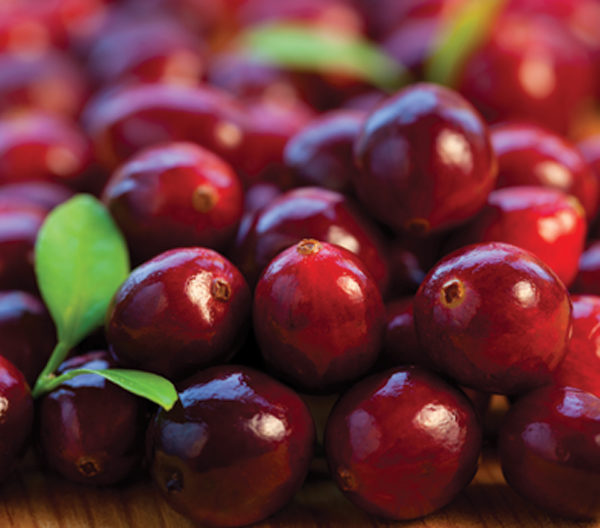You’re in for some schooling in the urology department, a branch of medicine that encompasses the health of the urinary tract, the adrenal glands and the prostate. The list of natural substances with a claim to benefit urological health is quite expansive. When it comes to symptom relief as opposed to prevention, the offerings described below fall on both sides of the fence. On the one hand, as problems arise within these sensitive organs and tissues, shoppers will be looking for quick relief from what they’re experiencing, and to improve their condition where possible. But for many of the conditions we’ll discuss, a healthy dose of prevention is definitely paramount.
Those that will benefit from urological support represent more than a small niche group, and taking a preventive mindset may make economic sense for many of these consumers. “Urological diseases affect approximately 20 million Americans annually, and the medical interventions for these diseases are some of the most expensive within the industry,” says Trisha Sugarek, director of R&D and national educator for Bluebonnet Nutrition Corporation, Sugar Land, TX. This is why natural supplements are of special importance for maintaining urologic health.
A Fluid System
The urologic complex depends on the consistent production and transmission of many types of fluids. Since water is the basis of all of this activity, it stands to reason that a lack thereof will lead to problems. “One of the most important steps that is absolutely essential to support urological health is proper hydration,” says Chris D. Meletis, Ph.D., director of science and research for Trace Minerals Research, Ogden, UT. What leads to the all-too-common problem of dehydration is the straightforward failure to drink enough water, compounded, Meletis explains, by our addiction to caffeine as a society. “With dehydration, particularly due to caffeine consumption, mineral losses can yield increased risk of kidney stones and cellular mineral imbalances,” he says.
Kidney health. Calcium deposits and increasing uric acid levels due to stagnating urine can increase the risk of stones and kidney damage. One primary solution is to drink more water and less caffeine, but an additional support mechanism is to offset these mineral losses with supplemental intake. A lack of magnesium and B vitamins, which Meletis says can be flushed away from too much caffeine, are risk factors for developing kidney stones.
A side from developing stones, much else can go wrong with these vital organs that sit at the apex of the urinary tract. The kidneys are jointly responsible for filtering out waste materials like urea and ammonia that are eventually eliminated. The kidneys also play a part in the regulation of pH balance and the composition of the blood, and in maintaining blood pressure and optimum calcium levels, explains Sunil Kohli, COO of Health Plus Inc., Chino, CA.
side from developing stones, much else can go wrong with these vital organs that sit at the apex of the urinary tract. The kidneys are jointly responsible for filtering out waste materials like urea and ammonia that are eventually eliminated. The kidneys also play a part in the regulation of pH balance and the composition of the blood, and in maintaining blood pressure and optimum calcium levels, explains Sunil Kohli, COO of Health Plus Inc., Chino, CA.
Many herbal extracts and vitamins are associated with preventing potential kidney issues and helping the body fight existing problems. “Bearberry extract (Uva ursi) is known to decrease the accumulation of uric acid, a byproduct of metabolism,” Kohli says. Uric acid can not only form deposits in the kidneys, but in the joints and in the blood stream as well, according to Kohli. He adds that bearberry is associated with the strengthening of the membranes in the urinary system, and that bearberry extract contains arbutin, which can help support healthy flora in these tissues.
The oil from the styriaca variety of pumpkin native to southeast Austria, when consumed in high doses, can enhance bladder function through the strengthening of the neuro-muscular junction, or the meeting place between the nerves and the bladder muscles, according to Eileen Sheets, managing director of Bioforce USA, Ghent, NY.
Kohli additionally cites dandelion root for its ability to aid in the removal of excess fluid and in bile secretion, nettles for helping to eliminate uric acid, short buchu leaf extract for soothing the urinary tract and eliminating mucus, chlorophyll for its detoxifying properties, vitamin K, which forms a compound that inhibits calcium oxylate crystal formation, and finally potassium for its water balancing and waste filtration.
Adrenal support. The pair of glands on top 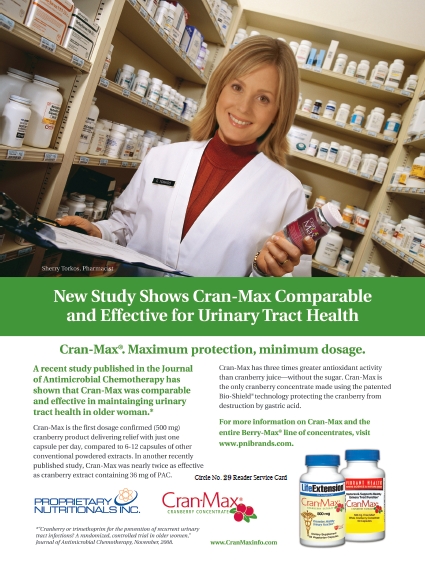 of the kidneys known as the adrenals assist the body in digesting carbohydrates and fat, according to Kohli, in addition to their role in regulating stress hormones. They also help regulate mineral and water balance in the kidneys through the secretion of the hormone aldosterone (1). This is an important element when considering modern stressful lifestyles and their potentially adverse effects on adrenal function, according to Meletis.
of the kidneys known as the adrenals assist the body in digesting carbohydrates and fat, according to Kohli, in addition to their role in regulating stress hormones. They also help regulate mineral and water balance in the kidneys through the secretion of the hormone aldosterone (1). This is an important element when considering modern stressful lifestyles and their potentially adverse effects on adrenal function, according to Meletis.
Urologists are responsible for the upkeep of the adrenal glands, and many natural substances are thought to support their proper function. This support begins with vitamin C, which helps the adrenals function with its antioxidant activity and by aiding norepinephrine synthesis, Kohli says. Amla extract is a robust source of vitamin C and has been shown to control inflammation, he adds. Additional adrenal support substances include ashwaganda extract for its antioxidant properties, B vitamins to help support the nervous system, zinc to aid in absorption of B vitamins and to directly support the production of adrenal hormones and Korean ginseng for its ability to help the body cope with stress from overworked adrenals, Kohli says.
To the above list, Sugarek adds vitamin D3, vitamin B5, echinacea root, astragalus root and milk thistle seed for adrenal support. For those whose adrenals struggle to maintain cortisol levels, she recommends licorice (not for those with high blood pressure), eleuthero root and rhodiola, as well as herbs already mentioned like Korean ginseng and milk thistle.
Cranberry and UTIs. Urinary tract infections (UTIs) are not something that should be taken lightly. “For those who have suffered with a UTI, the symptoms of burning, frequency, urgency and pain are a very serious matter,” says Dallas Clouatre, Ph.D., R&D consultant to Jarrow Formulas, Los Angeles, CA. The majority of these infections are due to the bacteria E. coli, and the success of a natural supplement in combating UTIs often depends upon the ability to prevent the adherence of bacteria to the urinary tract tissue.
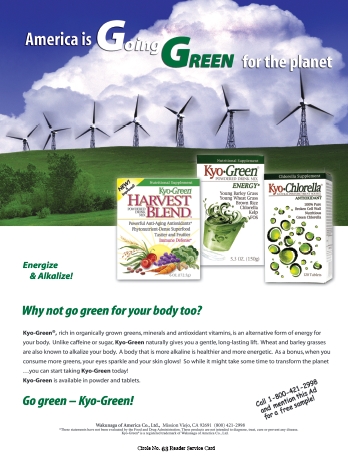 The group affected by UTIs usually includes more women than men. According to Dean Mosca, president of Proprietary Nutritionals Inc. (PNI), Kearny, NJ, 80% of women will experience a UTI in their lifetime, and 20% of all women will suffer through one in a given year. Approximately 9.6 million doctor visits in the United States per year are due to UTIs, and they are the second leading cause of missed work days for women, Mosca says. He adds that this increased likelihood of infection is primarily because of the shorter length of the urethra in women, making for a shorter travel distance for bacteria.
The group affected by UTIs usually includes more women than men. According to Dean Mosca, president of Proprietary Nutritionals Inc. (PNI), Kearny, NJ, 80% of women will experience a UTI in their lifetime, and 20% of all women will suffer through one in a given year. Approximately 9.6 million doctor visits in the United States per year are due to UTIs, and they are the second leading cause of missed work days for women, Mosca says. He adds that this increased likelihood of infection is primarily because of the shorter length of the urethra in women, making for a shorter travel distance for bacteria.
Pregnancy is a time when the likelihood of UTI is higher due to pressure on the bladder. “Menopause also increases the likelihood of a UTI because the decline in estrogen levels leads to thinning of the urinary tract, again making it easier for bacteria to break through,” Mosca says. Other risk factors include sexual intercourse, enlargement of the prostate gland in men and a suppressed immune system. Customers meeting these criteria are likely candidates for supporting urological tissue with supplementation.
The most trusted card in the UTI treatment deck is cranberry extract, an option originally directed at the female market primarily, but one that men, in particular older men, might benefit from trying as well, according to Clouatre. The history of the research behind cranberry for UTIs begins, according to Mosca, in the early 1980s with papers in the Journal of Urology that demonstrated cranberry’s inhibition of E. coli in the urinary tracts of mice. Later research found that proanthocyanidins along with other tannins are likely the components in cranberry that prevent E. coli from adhering to bladder and urinary tract cells.
Recent research has helped to further develop cranberry’s urological support credentials. An in-house in vitro study focused on the proprietary blend VitaBerry Plus+ from VDF FutureCeuticals, Momence, IL. At a low dosage, the ingredient decreased E. coli adhesion i n the urinary tract by 72% (2). WholeFoods also recently published news of research into the capacity of a branded cranberry ingredient to prevent UTIs (3). A study described by Mosca found that the patented cranberry concentrate Cran-Max (PNI) could hold the incidence of recurring UTIs in a study group to 10.8%, compared to 43.2% with a placebo.
n the urinary tract by 72% (2). WholeFoods also recently published news of research into the capacity of a branded cranberry ingredient to prevent UTIs (3). A study described by Mosca found that the patented cranberry concentrate Cran-Max (PNI) could hold the incidence of recurring UTIs in a study group to 10.8%, compared to 43.2% with a placebo.
From Clouatre’s perspective, the renown of cranberry in this context is both understandable and deserved. “Cranberry has an advantage in the UTI category in part because it is an accepted beverage and is promoted as a foodstuff, including as a functional food. This makes acceptance easy,” he says. Clouatre goes on to note that proanthocyanidins have other benefits including blood pressure regulation, broadening the appeal of cranberry. “Something else that stands out is that the mechanism of action is very simple—there is not any sort of heavy-handed intervention in the body,” he adds.
The timeframe for cranberry supplementation to take effect on a UTI, if taken in sufficient amounts, may be one or two weeks according to Clouatre. This means, he explains, that many women flock to cranberry only when a condition arises, and not in a continual, preventive way. Continued use may be the preferred course of action for women with chronic issues, Mosca argues, offering a recommended regimen for his company’s ingredient as an example. “Typically, people start a cranberry supplement regimen when they feel first symptoms. For those who are susceptible to UTIs, we would encourage these folks to take Cran-Max concentrate every day,” he says.
The same mechanism of action of cranberry on UTIs may be shared by the sugar substance D-mannose, Clouatre says; it is thought by some to prevent the adhesion of E. coli to the bladder and urethra. Additionally, similar relief may be gained through the use of probiotic strains. Their beneficial actions can serve to protect the tissues of the uro-genital tract. Clouatre notes that two proprietary strains (Lactobacillus rhamnosus GR-1 and Lactobacillus reuteri RC-14) have two decades of support for oral use, based upon an ability to protect vaginal and urinary tissue.
 Another urological issue to note is interstitial cystitis, or chronic inflammation of the bladder wall, a serious condition that some natural substances may be able to assuage. “Interstitial cystitis is an example of a challenging condition that all types of practitioners struggle with. Clinically, I have found a combination of MSM (Methylsulfonylmethane) and freeze-dried corn silk can often help meaningfully to lessen suffering from this viscous and life-altering condition,” says Meletis.
Another urological issue to note is interstitial cystitis, or chronic inflammation of the bladder wall, a serious condition that some natural substances may be able to assuage. “Interstitial cystitis is an example of a challenging condition that all types of practitioners struggle with. Clinically, I have found a combination of MSM (Methylsulfonylmethane) and freeze-dried corn silk can often help meaningfully to lessen suffering from this viscous and life-altering condition,” says Meletis.
Growing? Going? Gone!
Problems with the prostate gland can increase the urge to urinate in men, while making the process itself difficult to deal with. This is usually caused by benign prostatic hyperplasia (BPH), a common disorder in men as they get older. “BPH is typically due to excessive amounts of dihydrotestosterone (DHT) that induces inflammation and the enlargement of the prostate,” says Sugarek. DHT is a sex hormone that is thought to influence the growth of the prostate as men age (4). Enlargement occurs, Sheets explains, via accelerated cell growth and size, along with inflammatory processes. The result is the compression of the urethra, and therefore numerous urination issues can crop up. “With increasing prostatic volume, obstructive problems are manifested in the form of delayed beginning of urination, weak urinary stream, and formation of residual urine in the bladder,” Sheets says.
As with all segments of urologic health, anyone considering natural supplementation to prevent or help with existing prostate issues should consult a doctor. The research into natural supplements for prostate health has primarily been focused on the relief of symptoms, according to Sheets. The three areas of concentration could be divided into reducing residual urine volume in the bladder, minimizing difficult urination and reducing its frequency.
Perhaps the first supplement that springs to mind for many in the prostate support arena is saw palmetto, the benefits of which Sheets describes as well researched. This may be because it helps prevent the conversion of testosterone to DHT. Kohli notes that there is also evidence for saw palmetto inhibiting DHT from binding to receptors. A recent study to which Clouatre alludes found that a combination of nutrients, including lycopene and selenium, along with saw palmetto were effective at treating some symptoms of BPH including pelvic pain (5).
Though the research is not extensive, Clouatre also cites stinging nettles for their association with lessening BPH symptoms such as problems voiding and irritation, and a recent study attests to this effect (6). “One mechanism proposed is a reduction in the effects of sex hormone binding globulin (SHBG) thus preventing the conversion of testosterone to either DHT or to estrogen,” he says.
There is strong support as well for flower pollen extract, Clouatre explains, stating “Quite good evidence indicates that the extracts reduce the symptoms of BPH, including enlargement itself, associated inflammation often linked to bacterial infections (prostatitis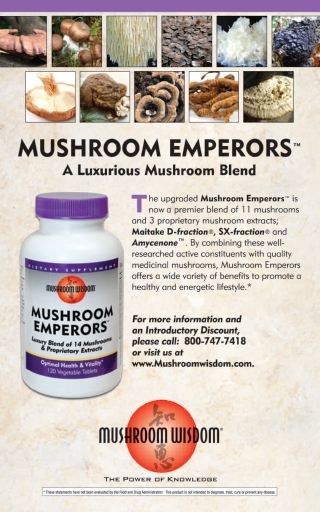 ), the number of trips a man must make to the bathroom at night, residual urine, etc.” He adds that flax lignans should be considered for their prostate supporting capacity, too.
), the number of trips a man must make to the bathroom at night, residual urine, etc.” He adds that flax lignans should be considered for their prostate supporting capacity, too.
We move back now to cranberry, this time in the context of prostate health, an application which has only recently received attention, Clouatre says. A clinical trial cited by Clouatre found a positive effect of cranberry on lower urinary tract symptoms, specifically on measures of urine flow and volume (7). Additionally, lower levels of prostate-specific antigen (PSA) were found in subjects; this is a compound typically found in elevated levels in those with prostate disorders.
On top of the aforementioned prostate supplements, Kohli recommends pumpkin seed oil, vitamin B6, L-Alanine and finally pygeum bark extract, which “contains phytosterols and triterpenes that have been shown to exert an anti-inflammatory activity that promotes healthy bladder and prostate function,” he says. In a research meta-analysis Kohli cites, men who took pygeum extract were found to be over twice as likely as with placebo to show improvement in their BPH symptoms (8).
There are baseline supportive nutrients that simply can’t be left lacking when maintaining the prostate. “When it comes to prostate health, zinc and selenium are ‘must minerals,’” says Meletis. Zinc is important for sexual health, and for controlling the testosterone/DHT conversion pathway, he explains. For Meletis, “an ounce of prevention is worth a tone of cure” for men and their prostates, as once tissues become inflamed, they become harder to penetrate and relieve.
Men may be reluctant to begin considering their prostate health, and more could certainly benefit from attention to the subject earlier in their lives. Sheets laments that it is often not until a man experiences some of the described symptoms, particularly getting up in the middle of the night to go to the bathroom, that his prostate health enters his mind. This can begin to occur around age 50, when she says half of men have some symptoms. “There are men who begin 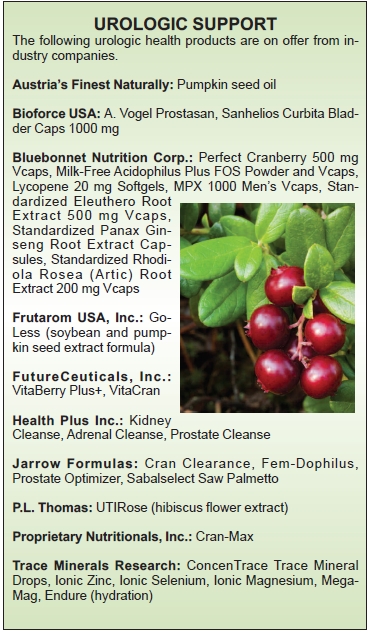 taking saw palmetto before symptoms begin and feel that it has helped prevent the onset of the urinary symptoms,” she says. It is not too late to begin after symptoms occur, and Clouatre believes that all men that have reached age 55 should consider supplementation.
taking saw palmetto before symptoms begin and feel that it has helped prevent the onset of the urinary symptoms,” she says. It is not too late to begin after symptoms occur, and Clouatre believes that all men that have reached age 55 should consider supplementation.
“Combining supplements with wise lifestyle choices and regular checkups will help prevent significant decline if a prostate condition develops,” Kohli says. For both men and women, a focus on all things urological will bode well for their present comfort. Kohli says his company also believes in “head starts,” meaning younger people of both sexes should think about laying the foundation for their future health.
For prostate health specifically, Kohli argues, many women are shopping for the men in their lives, and so promoting these products with this in mind can be effective. Another thing to consider is that, with so much tucked beneath the umbrella of urology, retailers may be positioning some relevant supplements exclusively in other categories, to the neglect of their urological potential. Kohli says a focus on urology can serve to make people more aware. He states, “Retailers do not typically sell or market such supplements as ‘urological support,’ but this may not be a bad idea. It will draw significant attention, and spur questions.” WF
References
1. N. J. Rennert, MD, “Aldosterone,” MedlinePlus, http://www.nlm.nih.gov/medlineplus/ency/article/003704.htm, accessed Oct. 24, 2011.
2. VDF FutureCeuticals, Inc., R&D Department, “VitaBerry Plus+ inhibits adhesion of pili-positive E. coli to human cells.”
3. “New Data: Cranberry Ingredient Prevents UTIs,” WholeFoods Magazine Online, Oct. 2011, https://wholefoodsmagazine.com/news/supplier/new-data-cranberry-ingredient-prevents-utis, accessed, Oct. 26, 2011.
4. Guy Slowik, MD, “What Causes The Prostate To Enlarge?” eHealthMD, June 28, 2011, http://ehealthmd.com/content/what-causes-prostate-enlarge, accessed Oct. 27, 2011.
5. G. Morgia, et al., “Treatment of chronic prostatitis/chronic pelvic pain syndrome category IIIA with Serenoa repens plus selenium and lycopene (Profluss) versus S. repens alone: an Italian randomized multicenter-controlled study,” Urol Int. 84(4), 400-6 (2010).
6. E. Bercovich, M. Saccomanni, “Analysis of the results obtained with a new phytotherapeutic association for LUTS versus control. [corrected],” Urologia 77(3), 180-6 (2010).
7. A. Vidlar, et al., “The effectiveness of dried cranberries (Vaccinium macrocarpon) in men with lower urinary tract symptoms,” Br J Nutr. 104(8), 1181-9 (2010).
8. T. Wilt, et al., “Pygeum africanum for benign prostatic hyperplasia,” Cochrane Database Syst Rev. (1), CD001044 (2002).
Published in WholeFoods Magazine, December 2011

